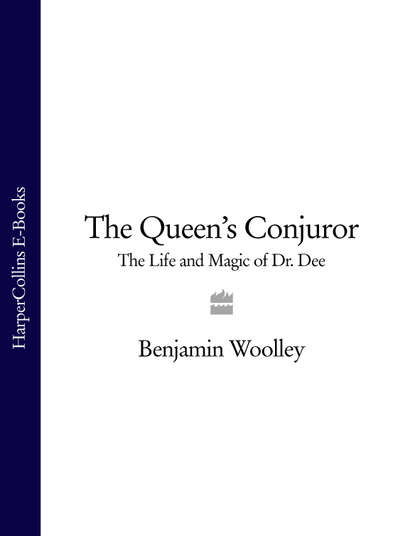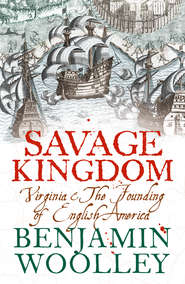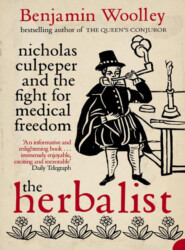По всем вопросам обращайтесь на: info@litportal.ru
(©) 2003-2024.
✖
The Queen’s Conjuror: The Life and Magic of Dr. Dee
Настройки чтения
Размер шрифта
Высота строк
Поля
(#litres_trial_promo)
Mathematics was his passion: although as a subject, it was regarded in some circles with suspicion. The seventeenth-century antiquarian John Aubrey reported that the Tudor authorities had ‘burned Mathematical books for Conjuring books’.
(#litres_trial_promo) Mathematics was still popularly associated with the magical ‘black arts’, the term ‘calculating’ (sometimes corrupted to ‘calculing’) being synonymous with conjuration. Pythagoras, a semi-mythical figure hailed as one of its founding fathers, was himself considered a magician. It was he who argued that numbers had inherent powers, pointing out the creative vitality immanent in the first four integers, 1, 2, 3 and 4. They expressed not only the most basic elements of geometry (the point, the line, the triangle and the solid) but also the harmonic ratios underlying both music and cosmic proportions. Such ideas inspired subsequent thinkers to search for other significances; assessing the meaning of the number of elements and planets; contemplating the precedence of the number nine over ten; constructing numerical hierarchies; and counting the number of angels on a pinhead. Even later figures such as Kepler and Newton, the founders of modern cosmology, allowed such numerological considerations to shape their work. Kepler believed that the planets must be spheres because of the trinity of centre, radius and surface; Newton decided to break with tradition and assert that there were seven colours of the rainbow because there were seven planets and seven notes in the musical octave.
(#litres_trial_promo) Like these men, Dee found the cosmic combinations thrown up by mathematics irresistible, and at the (numerologically-named) Trinity College, the young, ambitious Fellow undertook an extraordinary experiment to demonstrate their power (as well as make his mark).
He mounted a production of Aristophanes’ play Peace. First produced in 421 BC, it is a comedy, in style and humour much like Aristophanes’s better known Lysistrata. Peace, which (as its name suggests) explores a pacifist theme, is about Trygaeus, a ‘vine dresser’, who wishes to consult Zeus about the military fortunes of his fellow Athenians.
The opening scenes concern Trygaeus’s attempts to reach Zeus’s heavenly palace. He first attempts to do this using ladders, but they keep toppling over. So, like the mythical hero Bellerophon who slew the fearful Chimera, he calls on the services of a flying creature to carry him up to the Olympian heights.
However, where Bellerophon had the mighty steed Pegasus, Trygaeus is sent a dungbeetle, a giant ‘scarab’, which takes him on a ride so terrifying, he nearly ‘forms food’ for the creature.
Dramatically, it is a marvellous moment, but one, in the middle of Trinity’s main hall, virtually impossible to realise. Nevertheless, Dee was determined to find a way to bring his giant dungbeetle startlingly to life, and he turned to mathematics for a solution.
In his Mathematicall Praeface to Euclid’s Elements (1570), probably his most influential book, Dee discussed an ‘art mathematical’ he called ‘thaumaturgy… which giveth certain order to make strange works, of the sense to be perceived and of men greatly to be wondered at.’ The etymology is obscure: the OED dates the word’s origins to nearly a century after Dee’s first use, by which time it had become synonymous with magical trickery.
For Dee, however, it was mathematics not magic that offered the key to thaumaturgy. The examples he gave were feats of engineering such as the ‘dove of wood’ built by the Greek mathematician and reputed founder of mechanics, Archytas, which could apparently fly unaided, or the ‘brazen head’ attributed to the German monk Albertus Magnus, ‘which did seem to speak’. Dee recalled seeing such a ‘self moving’ automaton at Saint Denis in Paris. ‘Marvellous was the workmanship of late days,’ he continued,
for in Nuremberg a fly of iron, being let out of the Artificer’s hand did (as it were) fly about the gates… and at length, as though weary, return to his master’s hand again. Moreover, an artificial eagle was ordered to fly out of the same town, a mighty way… aloft in the air, toward the Emperor coming thither, and following him, being come to the gate of the town.
(#litres_trial_promo)
Dee believed such artificial marvels showed that, with mathematics, man could achieve miracles to rival God, and with Peace he had his first opportunity to prove it.
On the day of the performance, the benches of Trinity’s main hall were packed with students and academics, even possibly a scattering of courtiers from London. The pitch lamps were ignited and the stage was set. Trygaeus made his entrance and mounted the insect. ‘Now come, my Pegasus,’ he cried. ‘Come, pluck up a spirit; rush upwards from the earth, stretch out your speedy wings and make straight for the palace of Zeus; for once give up foraging in your daily food.’ Then to the audience’s amazement, the creature leapt from the stage.
‘Hi! you down there, what are you after now?’ called Trygaeus, as he was lifted towards the eaves of the hall. ‘Oh! My god! It’s a man taking a crap in the Piraeus, close to the whorehouses. But is it my death you seek then, my death? Will you not bury that right away and pile a great heap of earth upon it and plant wild thyme therein and pour perfumes on it? If I were to fall from up here and misfortune happened to me, the town of Chios would owe a fine of five talents for my death, all because of your damned arse.
‘Alas! how frightened I am! oh! I have no heart for jests,’ the beetle’s rider cried, adding, while peering offstage, ‘Ah! machinist, take great care of me.’
(#litres_trial_promo)
Dee’s coup de theatre had its intended effect. A ‘great won-dring’ spread through the audience. Dee gave no clue as to how he actually made his creature fly around the stage but the mechanisms mentioned in his Praeface include pneumatics, mirrors and springs. He also wrote a paper on the use of pulleys.
(#litres_trial_promo) An account of Trinity College’s theatrical expenses for 1546 and 1547 survive, but provide little clue, merely listing such commodities as pitch, ‘cressets’ (iron vessels in which pitch-soaked tapers were burnt for stage lighting) and costumes. The only ‘extraordinary item’ listed is a ‘great Rownd Candlestick for the stage in the hall’ which cost four shillings and sixpence.
(#litres_trial_promo)
‘Many vain reports’ soon began to circulate speculating on how the effect had been achieved.
(#litres_trial_promo) Some believed such an act of levitation could not have been realised by stagecraft alone. Another, possibly diabolical force must have been deployed.
A scene in Shakespeare’s Winter’s Tale echoes Dee’s experiment. Paulina tells King Leontes that she is about to bring what he believes to be a statue of his dead wife to life:
Quit presently the chapel, or resolve you
For more amazement. If you can behold it,
I’ll make the statue move indeed, descend,
And take you by the hand, but then you’ll think –
Which I protest against – I am assisted by wicked powers.
(#litres_trial_promo)
Dee was similarly accused of being assisted by wicked powers, and he too protested. In the ‘Digression Apologeticall immediately following the passage in the Praeface that discussed thaumaturgy and theatrical effects, he wrote:
And for these and such like marvellous Acts and Feats, Naturally, Mathematically, and Mechanically wrought and contrived: ought any honest Student and Modest Christian Philosopher be counted & called a Conjuror? … Shall that man be (in hugger mugger) condemned as a Companion of the Hellhounds, and a Caller, and Conjuror of wicked and damned Spirits?
The answer, he was about to discover, was ‘Yes’.
III (#ulink_246a42b0-8dee-5660-aeb1-d9c28c282f37)
In 1547, the year of his dramatic debut at Trinity, Dee noted that at 10pm on 10 August he and a ‘Master Christopherson’ heard the nocturnal song of ‘whistlers’. This is the earliest surviving entry in Dee’s private diary. It is no ordinary journal. Diaries and calendars of the modern sort were not yet invented. The nearest equivalent, printed ephemerides, contained astrological tables plotting the positions of the planets for each month of the year. Dee used these to record notable events, each entry being scrawled next to the row tabulating the heavens’ disposition for the relevant period or day. It is likely he was thus trying to identify links between his personal life and celestial events. The result is a uniquely intimate diary of Elizabethan life. Unfortunately, his often illegible notes are frustratingly terse and have been patchily preserved. For the years 1547 to 1554, just six entries remain, only surviving today because the antiquarian Elias Ashmole happened to copy them down over a century later.
The entry concerning the whistlers is a typical one. The presence of Master Christopherson is unexplained. Even his identity is a mystery, though he may have been John Christopherson, later Catholic Bishop of Chichester between 1557 and 1558, who in Queen Mary’s reign Dee would encounter during interrogations of Protestant heretics. Dee does not even mention where this incident took place. The significance of the birdsong is also unclear. Edmund Spenser later noted in The Faerie Queen that the ‘Whistler shrill’ was a bad omen, ‘that who so hears, doth die’.
(#litres_trial_promo)
Dee later recalled that his interest in astronomy first flourished during this period. Each clear night he would stand beneath the firmament, set up his quadrant or cross-staff, and make ‘observations (very many to the hour and minute) of the heavenly influences and operations actual in this elemental portion of the world. Of which sort I made some thousands in the years then following.’
(#litres_trial_promo)
A cross-staff, its use was as awkward and uncomfortable as this contemporary illustration suggests. To find the angle between two points (such as the horizon and a star), the observer would need to align the top and bottom of each cross bar with both points. The angle between them could then be measured off a scale marked along the main shaft. (Museum of the History of Science, Oxford.)
Dee soon discovered, however, that England did not provide the best intellectual viewpoint for surveying the secrets of the universe. To find out all the latest advances, both scientific and astronomical, he needed to travel abroad, in particular to the Low Countries, the place where the light of the Renaissance now shone with its fullest intensity.
The Low Countries have since split into Belgium, the Netherlands and Luxembourg. They were termed ‘low’ because so much of the land was beneath the level of the North Sea. Rich and successful commercial centres, they were also prone to floods of foreign influences, what Dee called the ‘intertraffique of the mind’. Radical Protestantism poured in from Germany, Renaissance science and art from Italy, news of navigational discoveries from Portugal, and imperial forces from Spain, whose king, Charles V, now ruled the entire region.
(#litres_trial_promo)
On 24 June 1548, Dee arrived at Louvain, near Brussels. It was home to the finest university in the region, which had been adopted by English reformers such as Dee’s friend and fellow academic Roger Ascham as a model for educational innovation.
(#litres_trial_promo) The town’s strong Protestant sympathies, braced against the Catholicism of the Imperial authorities, gave the university’s schools an intense, unsettled, but exciting atmosphere which was made all the more precarious by, as Dee noted in his diary, the recent arrival from Spain of Philip, Charles V’s son and heir.
Dee enrolled on a law course ‘for leisure’, but spent much of his time among the mathematicians, in particular a group clustered around the eminent scientist and physician Gemma Frisius.
(#litres_trial_promo) Frisius (1508-1555) was the university’s professor of medicine and mathematics, and practised as a physician in the town. However, his most important work was geographical not medical. Frisius pioneered the use of triangulation in land surveying, which enabled the position of a remote landmark to be measured from two points a known distance apart. The method relied on trigonometry, then almost unknown in England.
(#litres_trial_promo)
Under Frisius’s influence, Louvain had become caught up in a rapture of scientific measurement, a mood reflected in the contemporary Flemish picture The Measurers.
(#litres_trial_promo) Frisius set up one of the finest workshops in Europe making measuring instruments. It was run by the engraver and goldsmith Gaspar à Mirica, and some of the leading cartographers of the Renaissance were apprenticed there.
In amongst the cross-staffs and astrolabes in Mirica’s workshop, Dee encountered Frisius’s leading cartographer, Gerard Mercator.







